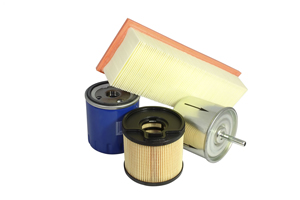Engine Oil
Engine oil is what lubricates a car’s engine, allowing it to run smoothly and last longer. Car owners must maintain a car’s engine by changing the oil and using the oil appropriate for their cars make and model. Every car comes with a ’check oil’ light and an oil filter under the hood. These components allow car owners to monitor their oil levels and add oil as needed without having to hire a mechanic.
Changing the Oil
An important part of routine car maintenance is changing the oil regularly. The necessary frequency of oil changes has become a point of contention among experts. The Engine Oil Bible maintains that engine oil can’t be changed often enough, but Nordic Group insists that, with the advent of detergent oils and multi-weight oils, some vehicles can go as far as 6,000 miles before needing an oil change. The best course of action is to check the owner’s manual and follow manufacturer’s recommendations.
An obvious benefit of changing one’s own oil is saving money, but oil change services frequently advertise bargains. If the ’check engine oil’ light comes on while driving, this is a strong indication that the car is running low on oil. A driver does not need a mechanic to add oil. However, if the oil light stays on or lights up shortly after adding oil, there may be a leak, and a mechanic should look at the car.

Check the owner’s manual to see if your driving habits are considered to be ’severe service.’ This type of driving requires more frequent oil changes, warns the Car Care Council. Have the oil changed accordingly, usually every 3-5,000 miles. For less wear and tear on the engine, drivers in cold climes (sub-zero driving temperatures) should drop their oil weight from 10-W30 to 5-W30. Your mom and dad would probably suggest simply moving to someplace warmer.
Description: The typical oil filter consists of a high-strength steel housing containing various types of filtering media. An anti-drainback valve prevents oil from running out of the filter when the engine is off. Today’s oil filters have a convenient spin-on design that makes removal and installation easy.
Purpose: The oil filter sifts out contaminants, allowing the oil to flow through the engine unrestricted. Should the oil filter become restricted or clogged with contaminants, they will flow around the filter. This bypassing is a safety mechanism, but you never want to let oil and filter changes go so long that bypassing takes place.
Maintenance Tips/Suggestions: For best results, consult your owner’s manual, but consider that your driving probably constitutes a severe maintenance schedule. Usually, this means oil and filter changes every 3,000 miles or 3 months. If you change the filter yourself, dispose of it properly. Take used filters to a facility that accepts them. Used filters can be crushed, removing the used oil and the steel part of the filter can be recycled. The oil from one used, seemingly innocent filter leaking into a landfill can taint 62,000 gallons of ground water.
Content provided by Car Care Alliance